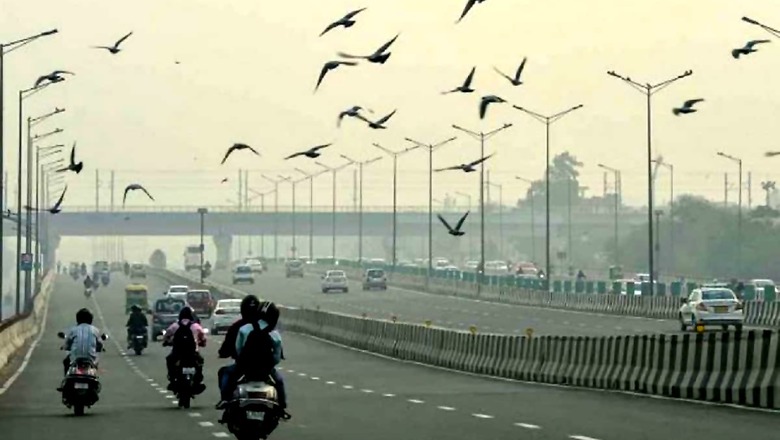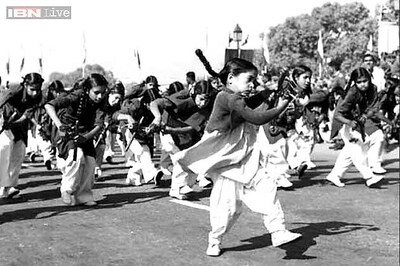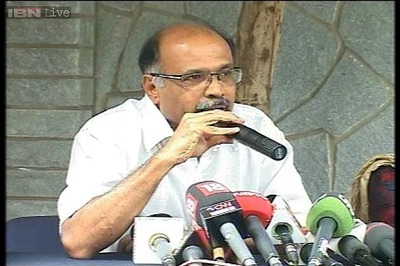Delhi Air Quality 'Very Poor', Likely to Enter 'Severe' Category on Diwali Night, Warn Govt Agencies

views
The national capital recorded its air quality in the "very poor" category on Thursday with experts and government agencies saying it may enter the "severe" category on Diwali night. A change in the wind direction from north westerly to north-north easterly was the reason behind the dip in pollution levels as it reduced the contribution of stubble burning significantly, they said.
The city recorded a24-hour average air quality index (AQI) of 314. It was 344 on Wednesday and 476 on Tuesday. Delhi witnessed six "severe" air days on the trot from November 4 to November 9, according to Central Pollution Control Board data.
The neighbouring cities of Faridabad (304), Ghaziabad (328), Noida (305), Greater Noida (327), and Gurgaon (293), which fall in the National Capital Region (NCR), also recorded their AQI in the "poor" and "very poor" categories. An official of the India Meteorological Department (IMD) said the "situation is much better compared to Tuesday". The wind direction has changed, preventing the transport of smoke from farm fires in Punjab and Haryana, he said.
The official, however, said the air quality is likely to deteriorate marginally on Friday. The IMD said winds were calm in the morning, and the minimum temperature was 11.6 degrees Celsius. Calm winds and low temperatures trap pollutants close to the ground, while favourable wind speed helps in their dispersion.
A fresh western disturbance is likely to increase the wind speed and improve the air quality in Delhi-NCR post Diwali, the IMD said. Light rain is likely on Sunday under the influence of a western disturbance. It is still to be seen if it is enough to wash away pollutants, Kuldeep Srivastava, the head of the IMD's regional forecasting centre said.
The air quality stayed in “very poor” category in Noida, Greater Noida, Ghaziabad and Faridabad, and “poor” in Gurgaon in the National Capital Region (NCR) on Thursday, according to a government agency.
Although concentration of major air pollutants PM 2.5 and PM 10 remained high in the five neighbouring cities of Delhi, according to the air quality index (AQI) maintained by the Central Pollution Control Board (CPCB).
According to the index, an AQI between zero and 50 is considered ‘good’, 51 and 100 ‘satisfactory’, 101 and 200 ‘moderate’, 201 and 300 ‘poor’, 301 and 400 ‘very poor’, and 401 and 500 ‘severe’.
The average 24-hour AQI at 4 pm on Thursday was 328 in Ghaziabad, 327 in Greater Noida, 305 in Noida,304 in Faridabad and 293 in Gurgaon, according to the CPCB’s Sameer app. On Wednesday, it was 360 in Ghaziabad, 340 in Greater Noida, 327 in Faridabad, 309 in Noida, and 288 in Gurgaon.
Till Tuesday, all five of Delhi’s neighbouring cities had their air quality in the “severe” category for over a week, according to data. PM 2.5 and PM 10 were the prominent pollutants in Noida, Greater Noida, Ghaziabad, Faridabad and Gurgaon, according to the CPCB.
The CPCB states that an AQI in the “very poor” category may cause respiratory illness on prolonged exposure, while “poor” may lead to breathing discomfort to most people on prolonged exposure. The AQI for each city is based on the average value of all stations there. Noida, Faridabad, Ghaziabad have four stations each, while Gurgaon has three and Greater Noida two, according to the app.
However, Delhi-NCR's air quality is likely to improve post Diwali due to an increase in the wind speed. On Sunday, the maximum wind speed is expected to be around 12 to 15 kilometres per hour," he said. V K Soni, the head of the IMD's environment research centre, said calm winds and firecrackers emissions may push the air quality to the "severe" zone on Diwali night.
The wind speed is expected to pick up thereafter, and the wind direction will be east-southeasterly, he said. There will be a significant improvement in air quality by November 16, Soni said.
The Ministry of Earth Sciences' air quality monitor, SAFAR, said the PM2.5 concentration in Delhi on Diwali is likely to be the "lowest" in the last four years if no firecrackers are burnt. It said pollution levels in Delhi during the Diwali period are likely to remain in the higher end of the "very poor" category in the absence of emissions due to fireworks.
The SAFAR said stubble burning-induced impact on AQI is expected to increase from "negligible to moderate" in the next two days. A spike in PM2.5 in the wee hours of November 15 is likely in case of fire-related emissions, it said.
The Central Pollution Control Board (CPCB) had on Wednesday ordered closure of hot mix plants and stone crushers in Delhi-NCR till November 17 in view of a likely increase in pollution levels during the festive season. It also asked the governments of Punjab and Haryana to take immediate stringent actions to curb stubble burning and the authorities in Delhi-NCR to strictly check biomass burning.
Read all the Latest News, Breaking News and Coronavirus News here




















Comments
0 comment